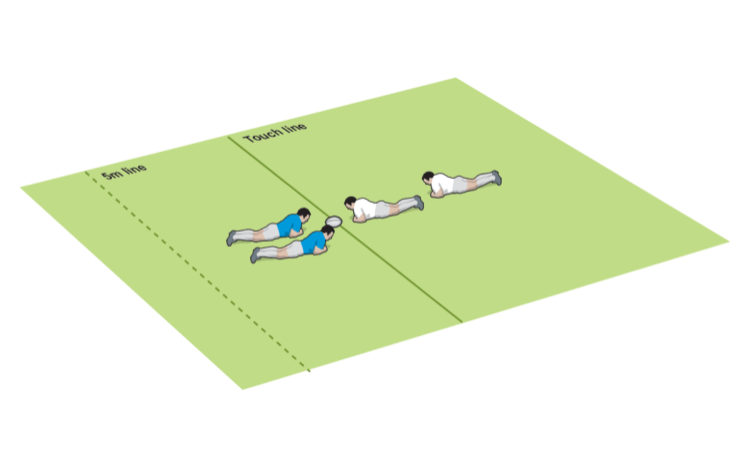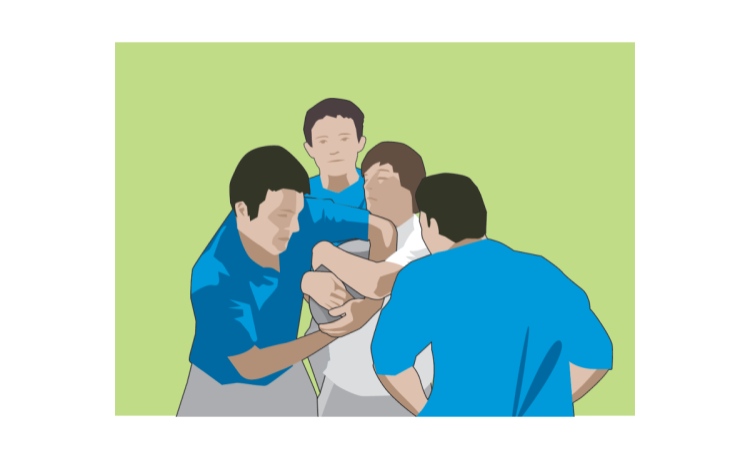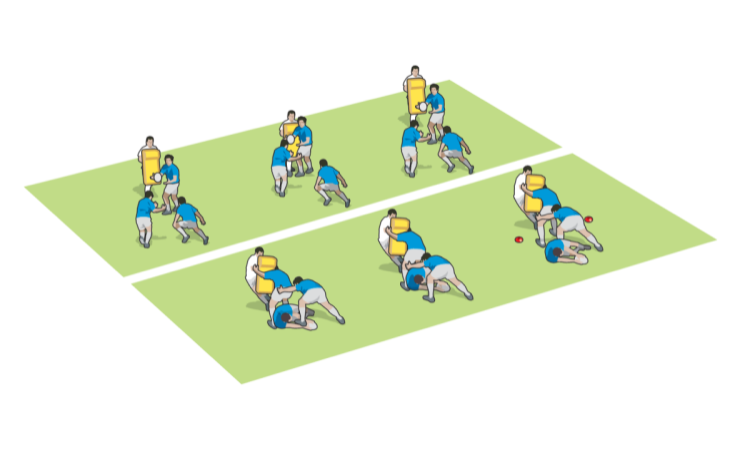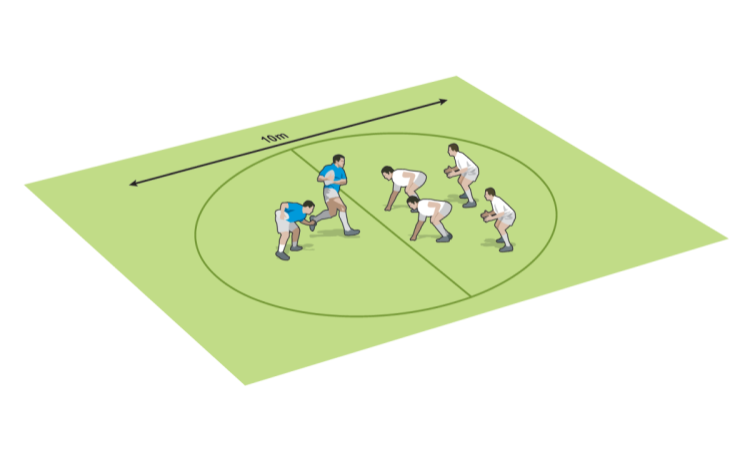You are viewing
1 of your 2 free articles
Win the ruck with just one player
Rucking & Maulingby Ian Diddams
Winning a ruck with just one player is a great way to maximise numbers post contact. In open spaces, this is a top skill to develop to retain quick ball and play again.
Attacking away from congested areas, this is an ideal way to keep quick ball going. It’s also a good individual skill for normal rucks too.
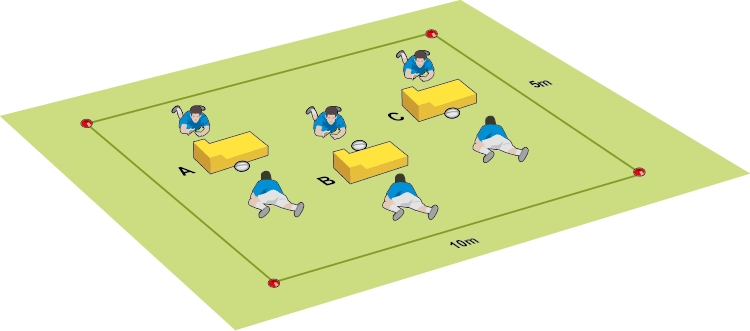


Attacking away from congested areas, this is an ideal way to keep quick ball going. It’s also a good individual skill for normal rucks too.
Activity 1

- Place ruck pads and players as in the picture. Players lie either side of the pad.
- On your command, players contest a 1v1 ruck. The winner is the first player to drive over the ball.

- Ensure players move from a prone position, to all fours, to a three-point stance to enable them to move quickly and powerfully.
Activity 2

- Next, players face each other across the box.
- Teams pass a ball between themselves until you call which ruck pad to run to.
- When the letter is called, the players in possession of a ball drop it and contest a ruck at that pad.
Development
- Two teams of three start by passing a ball between them. Give each team a colour.
- When you call that colour, that team’s ball carrier enters the box with a team mate along with two of the other team.
- If a tackle is made, then there is a 1v1 ruck. No passing is allowed. Once the ruck has finished, players leave the box and return to their starting positions.
TECHNIQUE
- Low body positions.
- Contact with the shoulder.
- Driving low to high.
- Continuous small, driving steps.
Related Files
Vol-1-Issue-495-D-Cottrell-win-the-ruck-with-just-one-player.pdfPDF, 413 KB
Newsletter Sign Up
Coaches Testimonials

Gerald Kearney, Downtown Las Vegas Soccer Club

Paul Butler, Florida, USA

Rick Shields, Springboro, USA

Tony Green, Pierrefonds Titans, Quebec, Canada
Subscribe Today
Be a more effective, more successful rugby coach
In a recent survey 89% of subscribers said Rugby Coach Weekly makes them more confident, 91% said Rugby Coach Weekly makes them a more effective coach and 93% said Rugby Coach Weekly makes them more inspired.
Get Weekly Inspiration
All the latest techniques and approaches
Rugby Coach Weekly offers proven and easy to use rugby drills, coaching sessions, practice plans, small-sided games, warm-ups, training tips and advice.
We've been at the cutting edge of rugby coaching since we launched in 2005, creating resources for the grassroots youth coach, following best practice from around the world and insights from the professional game.
More from us
© 2023 Rugby Coach Weekly
Part of Green Star Media Ltd. Company number: 3008779
We use cookies so we can provide you with the best online experience. By continuing to browse this site you are agreeing to our use of cookies. Click on the banner to find out more.



